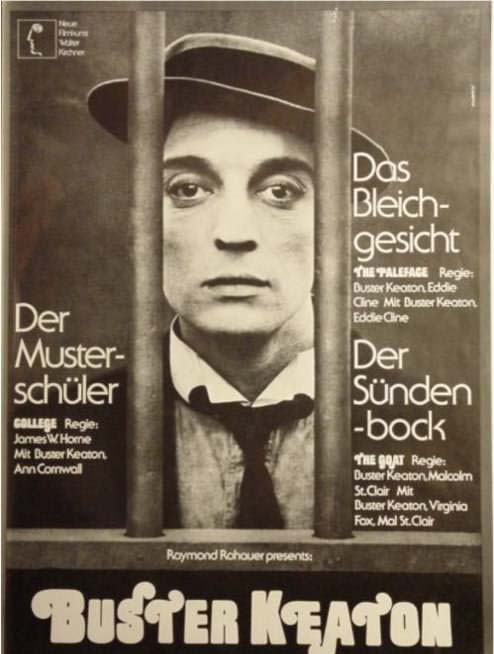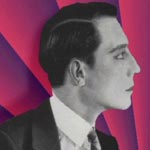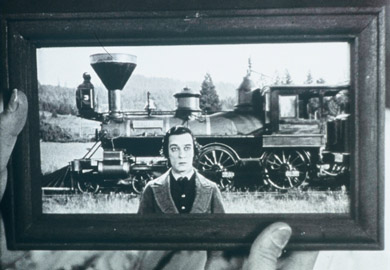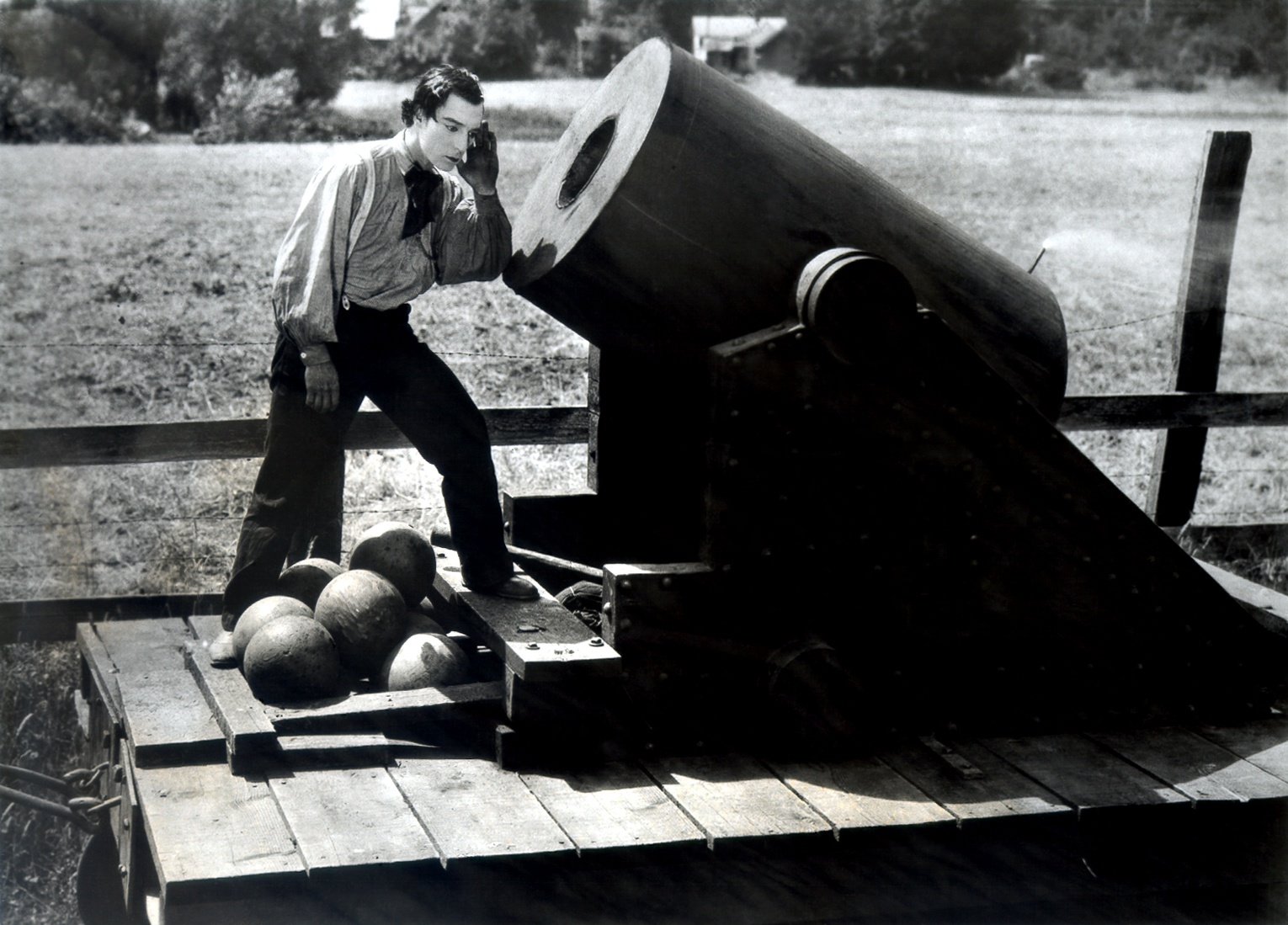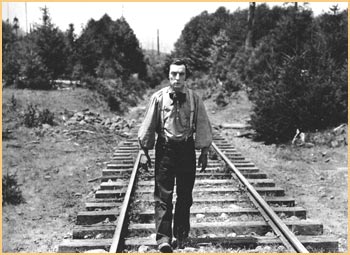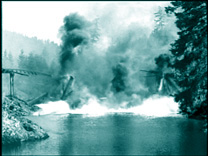 | Buster Keaton |
|
1908 |
|
|
|
|
|
|
|
|
|
|
The General has long been praised as one of the greatest films ever made; it was one of the first to be included in the Library of Congress for the National Film Registry as part of the National Film Preservation Act.
But the main feature is The General, Keaton''s 1926 Civil War action film, which is set up very quickly before it takes off. Keaton plays Johnnie Gray, a railroad engineer in the south, just before the war. He loves two things: his locomotive, dubbed The General, and his gal, Annabelle Lee (Marion Mack). When the war breaks out, Annabelle''s brother and father run off to enlist in the Rebel army. "Aren''t you going to enlist?" Annabelle asks Johnnie, and so as not to look like a wimp, he runs off to the recruitment center. However, the army doesn''t want him as a soldier, because they think he''s more valuable in his civilian occupation. They don''t bother to tell Johnnie this, though, and his vague explanation for not joining the army doesn''t hold water with Annabelle, who dumps him.
Buster Keaton''s masterpiece, THE GENERAL, was first shown to an audience at a special evening preview on October 22, 1926 at the California Theatre in San Jose. The film, which was presented in conjunction with the latest Richard Dix-Esther Ralston comedy, THE QUARTERBACK, attracted Keaton and screenland celebrities including his sister-in-law, popular star Constance Talmadge. They came from Hollywood on the Lark and stayed overnight at the Sainte Claire Hotel. Despite the fanfare, in an ominous prelude of THE GENERAL''s 1920s reception by American audiences, The San Jose Mercury-Herald''s critic, Josephine Hughston, dismissed the new film, writing that "it falls far below some of Keaton''s other productions. . . .There is a feeble plot of a sort and considerable rather pointless comedy, although some of it is really funny."
Perhaps sensing a box-office fiasco, Keaton and his associates at United Artists took the unprecedented and extraordinary step of first releasing THE GENERAL in Japan in December, 1926, under the title KEATON, SHOGUN, before premiering it in New York City on February 5, 1927. Whatever its popularity in Japan, it met with a cool reception in America from both the critics and the public as the first San Jose response indicated. Notwithstanding, it has since become the comedian''s most acclaimed film and the most often revived. The apparent lack of contemporary enthusiasm for the film may derive from its violation of standard rules regarding cinematic genres. Although comedians such as Chaplin in THE GOLD RUSH and Keaton in OUR HOSPITALITY had previously used period settings as backgrounds for their exploits, THE GENERAL was the one time in the American silent cinema that a filmmaker combined the genres of comedy and the historical film spectacle. Keaton''s film is based on an actual event in the Civil War--the theft of a Confederate locomotive by Union raiders and the resulting pursuit involving the comic hero. Owing as much to D. W. Griffith, James Cruze and John Ford as to the slapstick comedy tradition, THE GENERAL was shot on a massive scale in an Oregon standing in for the Civil War South with authentic trains of the period. Unprepared for such an unprecedented mixture of genres, the American public and critics in 1927 failed to appreciate THE GENERAL despite Keaton''s previous popularity.
Later generations, less structured in their cinematic perceptions, have been far more receptive to the most a typical comedy of the silent era. Although Keaton''s hero is a Confederate partisan, the film is not concerned with the politics of the 1860s and it has managed to escape the clouds of controversy that seem to arise over all things Southern. Even today, when the playing of "Dixie" or a display of the Confederate flag can set off storms of protest, audiences respond to the indomitable Keaton who somehow manages to survive and indeed overcome the crises of history that swirl around him. Simultaneously devoted to his locomotive and the heroine whose love he seeks, Keaton''s Johnny Gray transcends the passions of his time in his often-fumbling quest for the immediate. - http://www.gildasattic.com/buster.html
The General (1926)
Buster Keaton page
Buster Keaton Society
трюки Бастера Китона

